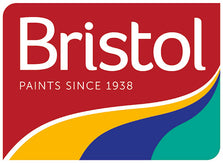
Are there certain paints that work better with brushes, rollers, or sprayers?
The short answer is "Yes!", the method of paint application—whether using brushes, rollers, or sprayers—can be influenced by the type of paint as well as the specific project at hand. Here's a breakdown:
-
Brushes:
- Best For: Detailed work, edges, trims, moldings, and smaller areas. Brushes provide precision and control.
- Paints to Use: Both latex and oil-based paints can be applied using brushes. The key is selecting the right type of brush. For latex paint, a brush with synthetic bristles (nylon or polyester) is preferable. For oil-based paint, natural bristle brushes, such as those made from hog hair, work best.
- Paints to Avoid: Extremely thin or watery paints may not provide enough coverage when applied with a brush.
-
Rollers:
- Best For: Large, flat surfaces like walls and ceilings. Rollers help in covering a larger area faster than brushes.
- Paints to Use: Rollers are versatile and can be used with most paints, including latex, oil-based, and even primers. The nap (or thickness) of the roller cover should be chosen based on the texture of the surface and the type of paint. For example, thicker naps are used for textured surfaces, while smoother naps are ideal for finer finishes.
- Paints to Avoid: Very thick or gel-like paints might not roll on as smoothly. Also, some specialty finishes might not be well-suited to roller application.
-
Sprayers:
- Best For: Large areas, uneven or textured surfaces, or projects where speed is essential. Sprayers can also be used for furniture or intricate designs where a smooth finish without brush or roller marks is desired.
- Paints to Use: Many paints can be used in sprayers, but they often need to be thinned to the correct consistency to avoid clogging the sprayer. Both latex and oil-based paints can be used, but it's essential to clean the sprayer thoroughly after use, especially when using oil-based products.
- Paints to Avoid: Paints with a very thick consistency or those containing particles (like some textured paints) may not be suitable for sprayers unless they can be thinned appropriately.
Regardless of the application method, always ensure that the surface is properly prepared (cleaned, sanded, and primed if necessary) for the best results. It's also a good idea to do a test patch to ensure the paint and application method is appropriate for your specific project.
